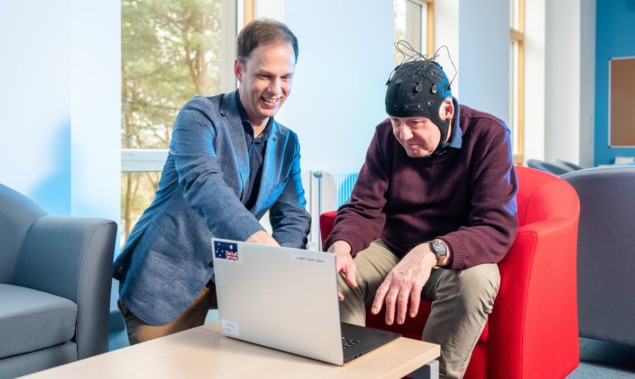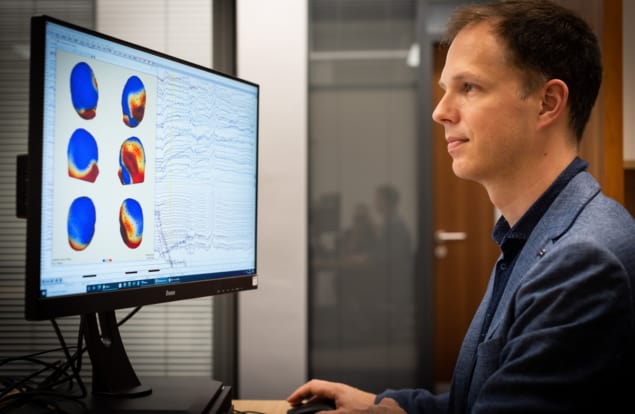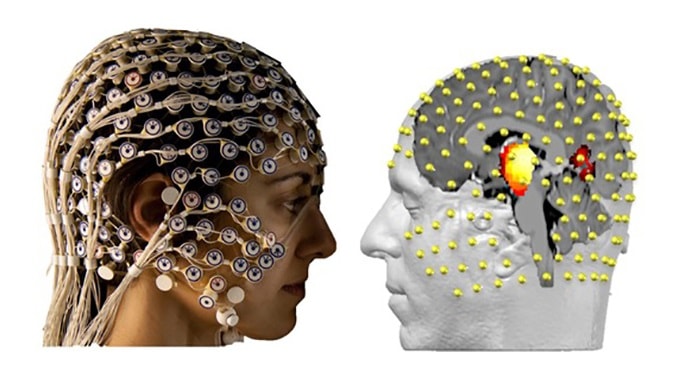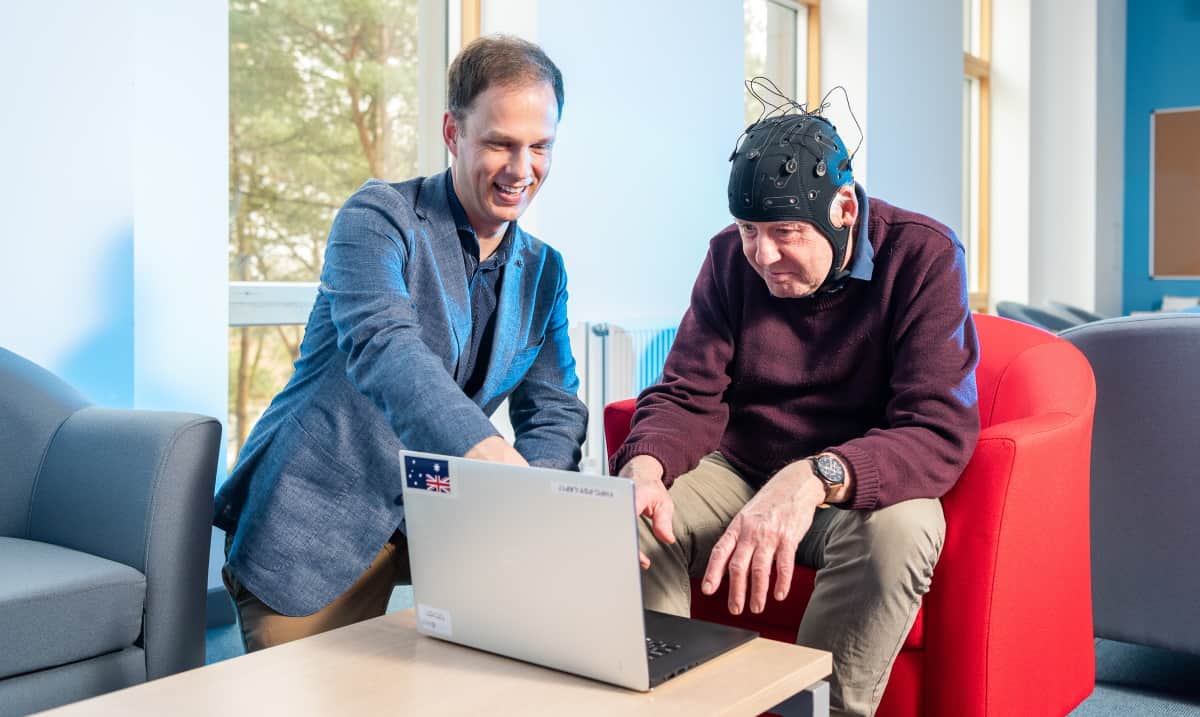
A new memory assessment technique could pave the way for earlier diagnosis of Alzheimer’s disease, the underlying cause of around 60% of dementia cases. The approach uses electroencephalography (EEG) to measure brain activity while participants watch flashing images on a computer screen.
Current diagnostic tests for Alzheimer’s disease are not effective during its early stages, meaning that Alzheimer’s is typically only diagnosed late in the disease process. As such, there’s a real need for early diagnosis tools that could enable the timely initiation of lifestyle interventions to slow the rate of cognitive decline. Such a tool could also help drug development, through earlier and more accurate identification of dementia patients in clinical trials.
The research team developing the new EEG-based test, led by cognitive neuroscientist George Stothart from the University of Bath, think that it could lower the age of diagnosis by up to five years in the near future. In the longer-term, the technique – known as Fastball EEG – has potential to improve this further.
EEG works by using multiple electrodes placed on the scalp (in an EEG cap) to record the brain’s electrical activity. Fastball uses a method called fast periodic visual stimulation (FPVS), which measures brain signals as the subject views a series of rapidly presented images, a few of which are repeated at slower intervals. The technique is highly effective at picking up small, subtle changes in brain waves that occur when a person remembers an image.
The big advantage of Fastball EEG is that it is completely passive. The person performing the test is not given any instructions prior to the task, which is important as dementia patients may struggle to follow complex instructions, and is not asked to reflect on, respond to or remember any items. The technique is also low-cost, non-invasive and uses technology that’s already available in hospitals.
“Fastball offers a genuinely novel way of measuring how our brain is functioning,” Stothart explains in a press statement. “The person being assessed doesn’t need to understand the test, or even respond, they simply watch a screen of flashing images and by the way we manipulate the images that appear we can learn an enormous amount about what their brain is, or is not, able to do.”
Fastball trials
The FPVS procedure induces two discrete frequency responses in the EEG, which reflect the participant’s periodic neural responses to the stimuli. The first reflects visual processing at the image presentation frequency. The second mirrors the brain’s response to previously seen images and reflects the patient’s recognition memory. Analysing the EEG spectrum at this second, slower frequency can quantify the patient’s memory response.

In a study reported in Brain, Stothart and collaborators tested Fastball EEG in 20 patients with Alzheimer’s disease, 20 healthy older adults and 20 healthy younger adults. Participants performed the Fastball task, which took less than 3 min, under three conditions: recognition, repetition and control. In the recognition condition, eight images were viewed beforehand, and then repeatedly shown within a stream of unique previously-unseen images. In the repetition condition, the eight images were not seen in advance but were repeated during the Fastball task. In the control condition, subjects only viewed a stream of novel images.
For both the recognition and repetition conditions, Fastball EEG detected significantly impaired recognition memory in Alzheimer’s disease patients compared with healthy older control subjects. There were no differences between the two groups under the control condition, where image recognition was not included. The Fastball test could also discriminate Alzheimer’s disease patients from healthy older adult controls, with an accuracy of 86%. No significant performance differences were seen between older and younger healthy controls.
After the Fastball task, participants completed a forced-choice task, in which they had to identify a previously seen image from two alternatives. Here, the researchers observed little difference between Alzheimer’s disease patients and controls, suggesting that Fastball was more sensitive to memory performance than this behavioural recognition test.

EEG can look deep into the brain
The researchers conclude that this new method for measuring visual recognition memory is sensitive to changes in recognition memory processes in Alzheimer’s disease that would be missed by behavioural testing alone. “The tests we currently use to diagnose Alzheimer’s miss the first 20 years of the disease, which means we are missing huge opportunities to help people,” says Stothart. “Ultimately, the Holy Grail of a tool like this would be a dementia screening tool used in middle age for everyone, regardless of symptoms, in the same way we test for high blood pressure. We are a long way from that, but this is a step towards that goal.”
The team has now extended the approach into earlier stages of dementia, examining subjects with mild cognitive impairment, which for some people (although not all) is a precursor to Alzheimer’s disease. “We are conducting a longitudinal study of patients with mild cognitive impairment using an expanded battery of Fastball tasks designed to capture a range of cognitive functions,” Stothart tells Physics World.
